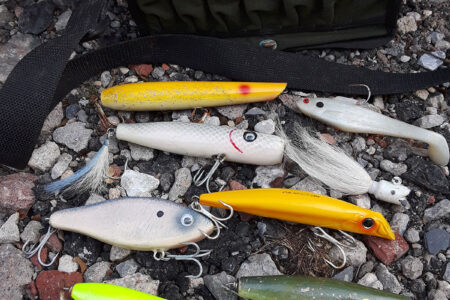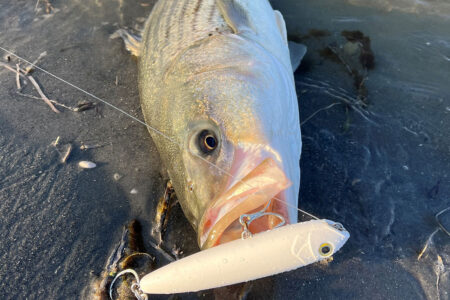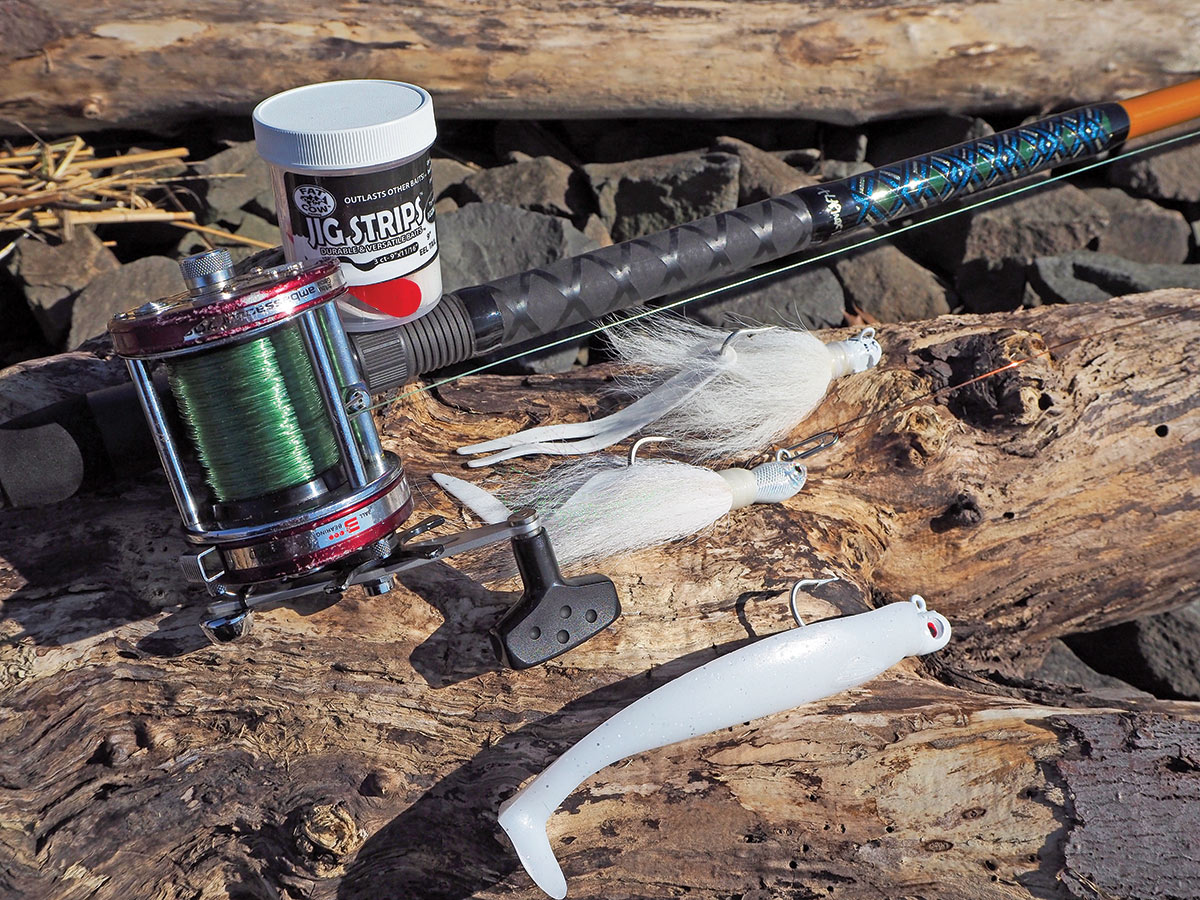
No less productive today than in seasons past, the jig could be the perfect lure for fishing deep current.
I eased my truck into the parking area cut out from the dune many years before, killed the engine and hopped out into the brisk northwest October wind. It had been several weeks since I last set foot on the nearby jetty wall, but word was that there had been both mullet and peanut bunker dumping out from the back pond for several tides. The moon was bright as it was a few days before full, but I knew it would set before the tide bottomed out. Further, with only a few weeks remaining in the season coupled with the moderate cloud cover predicted to arrive in the next hour, my anticipation level was quite high. I could see at least two vehicles parked near the rock wall about 1/4-mile to my east, and at least a half-dozen casters could be seen silhouetted against the horizon atop the rocks.
Walking the surf line towards the rocks I encountered 4- to 5-inch “candy bar” bunker washed up on the sand and witnessed several bass almost beach themselves while in hot pursuit—the bite was on! I arrived at the rock wall only to find that what had appeared to be six casters was in reality an even 10. What’s worse, I had seen several fish landed as I walked down the beach so the odds of any of them leaving soon were quickly shot. Nonetheless, I scaled the rocks without the aid of a light—I pretty much have their position committed to memory—and dropped my two rods and small surf bag in an out-of-the-way rocky crevice.
The entire crew was engaged in the rotation at the end of the rocks with one angler casting before feeding line to towards the horizon. He then moved to the side to begin his retrieve while the next caster followed with his cast. As the plug would swing out of the rip, the caster made his way further to the side. On a good night when all anglers are both well-versed in the art of the drift and courteous to their fellow caster, I had seen six or more anglers fishing simultaneously while a short line formed on the rocks behind. Unfortunately this was not the case tonight as this crew of sharpies would run into problems the moment a third caster attempted to join in the rotation, so I opted for a bucktail jig over a swimming plug.
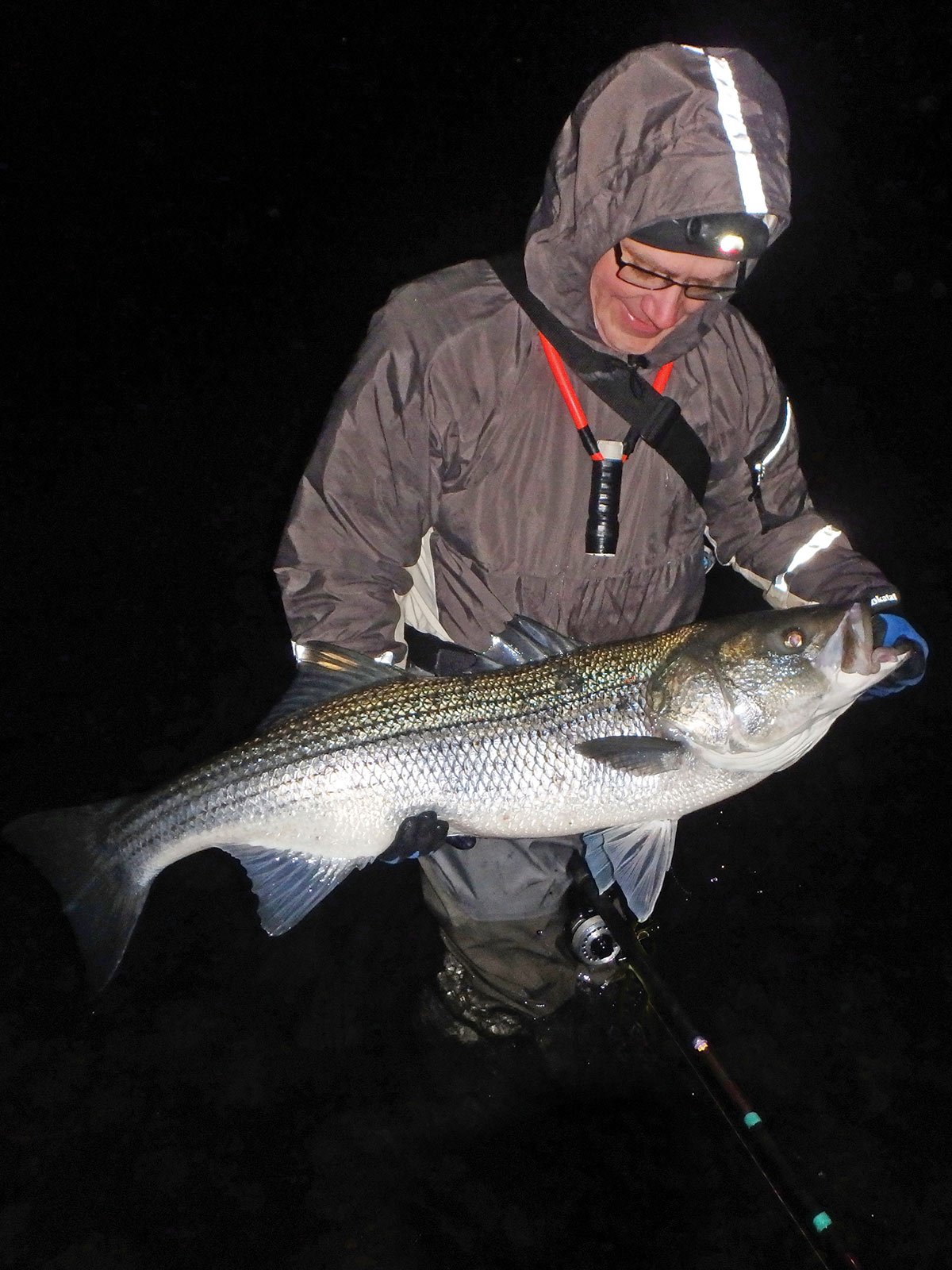
With a white 1-1/2-ounce Spro power bucktail clipped to my leader and a white Fat Cow jig strip hanging from the hook, I pocketed a 2-ounce bucktail as well as a few white JoeBaggs Patriot Fish mounted on 1-1/2- and 2-ounce heads. Again without my light, I walked past the line of anglers waiting their turn to fish, ignored their grumblings as they perceived my action as “line cutting” and hopped down out of their way at the water’s edge, well up-tide of where they were casting. Setting my feet where I had stood so many times before, I pitched a cast slightly up-current towards an eddy formed by a large boulder. The fresh 30-pound monofilament sung as it peeled off my reel, the bearings of the Abu Garcia 7000c oiled just right so that a backlash would be a rarity. I engaged the reel upon splash-down, waited for the jig to touch bottom and began a slow retrieve swimming the jig within a foot or so of the sticky structure beneath. On my sixth or seventh cast I felt the bump of a fish but swung late and missed. Several casts later I was not so delayed in my reaction and I buried the hook home in a 20-pound bass. Between an almost-locked drag and heavy fiberglass Lamiglas rod, I quickly landed the fish, unhooked it and released her all without the aid of a light and oblivious to the casters hauling in schoolie after schoolie over my shoulder.
Before the tide would slack out and begin to fill back into the pond I would land another 27 bass between 5 and roughly 35 pounds, all on jigs. Aside from one bass of 28 pounds landed on an eel a few minutes before slack, I didn’t see another fish eclipse the 15-pound mark yet none of my fellow anglers changed their tactics. This very same scenario played out for the next three nights with almost duplicate results, and the bite only fell off when the full moon was no longer shaded by sufficient cloud cover and the baitfish vanished.
There are certain lures which, for me anyway, simply go hand-in-hand with specific types of structure. A strong current moving across a point is darter country, a deep boulder field screams for a large needlefish, and water moving in or out of a breachway or inlet is best fished with a bucktail jig. The latter—jigging a breachway—was taught to me many, many years ago by several of the ‘Old Guard’ from which I owe a great deal of my surfcasting knowledge. Often was the night where two or three of us would do a number on the bass in the breachways of Rhode Island with nothing more than a 1-1/2-ounce white bucktail adorned with a white pork rind as our “weapon of bass destruction.” Without trying to sound like an old fogey, it feels as if the art of fishing a bucktail in this manner is lost upon much of the modern surfcasting fraternity. While spots like the Cape Cod Canal and the large, deep outflows of Long Island still see the simple bucktail being employed by a few sharpies, it’s far more likely that a newbie surfcaster will clip the flavor-of-the-day, fancy-paint-job, “it” plug onto his line before he would even consider a combo of lead and deer hair to fish an outflow. While there was a slight surge in its popularity a few seasons back when a handful of “boutique” jig companies popped up, the fad of bucktailing has once again been cast aside for other more glamorous—yet not always more productive—ways to tempt a striped bass.
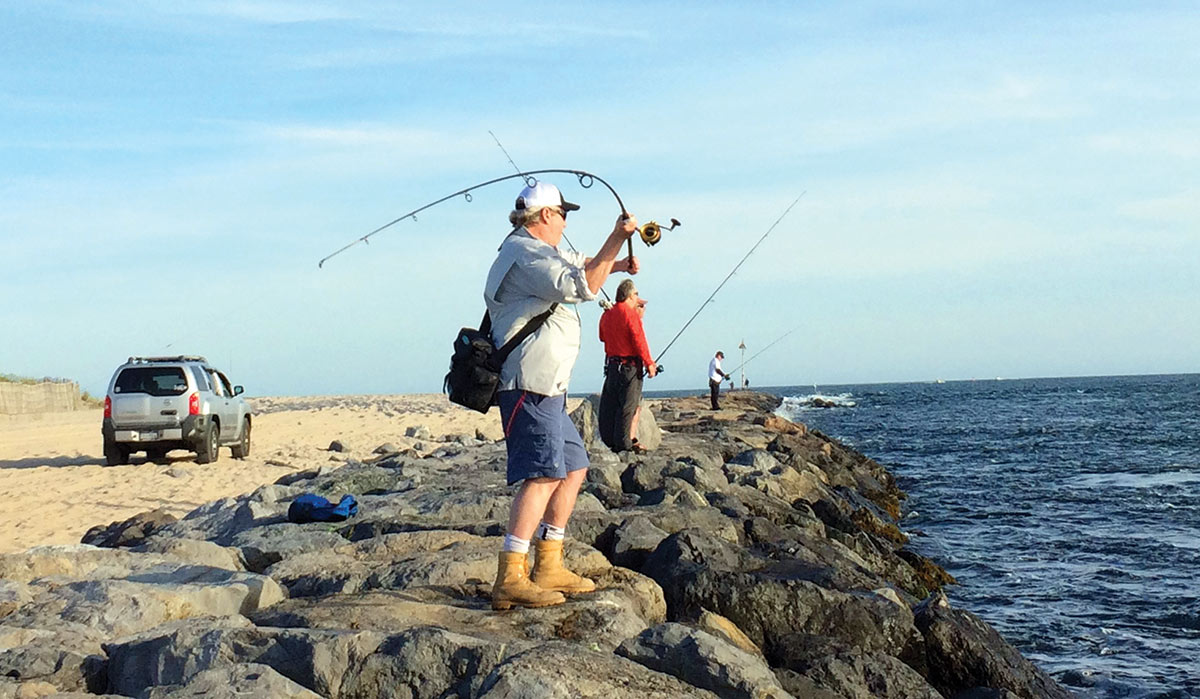
Jigging an outflow in its most pure form is about as basic as it gets. Simply cast the jig to a likely spot and reel it back to your feet. But where the intricacies are found, and what sets a fisherman apart from someone who is doing little more than “feeding rocks,” is in the feel. First and foremost, unless you’re fishing a clean sand bottom, expect to lose some jigs. Even the most seasoned of bucktailers expects to lose some jigs, and as I was told by my dad some 30-plus years ago, “If you’re not losing the occasional jig then you’re not fishing it right!”
So how does one acquire this mystical feel? Begin your training by making a lot of casts! But it’s more than just casting, you must pay attention to what is going on at the end of your line and why. Make note of how long from splash-down to feeling bottom it takes with each cast, where the cast was made, how tight the line is on the free-fall, tide stage, whether or not there is a swell rolling into the channel, the type of line and leader you are using, how fast or slow you must retrieve to keep the jig near but not on the bottom, what weight jig you are using, what type of hair is used, how thick the hair is tied-in, what trailer you are using and so-on. Each of these factors (and more) will have an effect on your results, and they are constantly changing. It seems like a lot, and it really is at first, but it is the attention to such fine details that not only produces success, but produces repeatable success.

